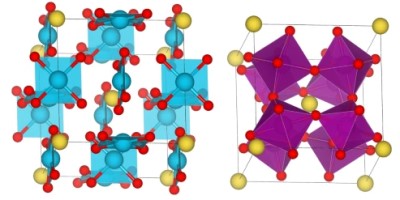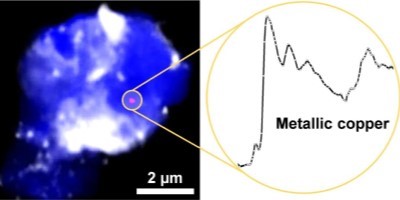News Library
New Insights into Magnetoresistance

Nature Communications article addresses a long-standing problem in magnetoresistance. Read more.
Discovery of microscopic metallic particles in the human brain

A UK-led international team of researchers has discovered elemental metallic copper and iron in the human brain for the first time.
Strongest carbon-carbon single bond yields to macrocyclic Rh complex
Oxidative Addition of a Mechanically Entrapped C(sp)-C(sp) Bond to a Rhodium(I) Pincer Complex
By use of a macrocyclic phosphinite pincer ligand and bulky substrate substituents, researchers in the Chaplin group have demonstrated how the mechanical bond can be leveraged to promote the oxidative addition of an interlocked 1,3‐diyne to a rhodium(I) center. The resulting rhodium(III) bis(alkynyl) product can be trapped out by reaction with carbon monoxide or intercepted through irreversible reaction with dihydrogen, resulting in selective hydrogenolysis of the C−C σ‐bond.
HOT article in Angew. Chem. Int. Ed.
Chemistry World Today highlights Shipman Group Research
Chemistry World Today highlights Shipman Group Research into 'Synthetic strategy exploits fluxional nitrogen to deliver three chiral centres for the price of one'
Alzheimer's discovery published in Science Advances
Peptide-mimetic metallohelices bind Alzheimer protein and extend life in an insect model
Scott, Fox and Gibson develop 'metallohelical antifreezes'
A collaboration between the Fox, Scott and Gibson groups has been published in the Journal of the American Chemical Society. The team were inspired by how small helical antifreeze proteins in Nature enable extreomophiles to survive low temperatures, where other species would not survive. Rather than using traditional peptide/protein chemistry, the team used self-assembled metallohelicates which have similar dimensions to a small alpha helix, and found some which were remarkably potent at stopping ice crystal growth ; a major technological challenge in applications from wind farms, to aircraft to cryopreservation. Modelling studies showed that the underlying activity could be linked the patches of hydrophobicity (water liking) and hydrophobicity (water hating).
Read the paper here
Antifreeze Protein Mimetic Metallohelices with Potent Ice Recrystallization Inhibition Activity
Two is the magic number
The Pattison Group have published the first Rh-catalysed arylation of fluorinated ketones in Chem Comm. Interestingly, we showed the difluorinated (CF2H) ketone to be more reactive than the trifluoromethyl (CF3) ketone, despite the fact each additional fluorine atom provides extra electronic activation.
Open-shell complexes
Collaborative work from the groups of Chaplin, Unwin, Rourke, and Wedge (Warwick physics) exploring the organometallic chemistry of paramagnetic complexes of palladium(I) and platinum(I) has been published in Angew. Chem. Int. Ed.
Anticancer metallohelices; potency & selectivity
Warwick Chemistry, Life Science and Medical School team up to make a new generation of readily self-assembled metallohelices kill cancer cells at very low concentration (40 nM) but have low toxicty to microbes, insects and healthy human cells.
Highlight of Diamond Science
Work performed in Richard Walton’s group has been selected as a Research Highlight in the Diamond Light Source Annual Review for 2014-2015. In this work, carried out by PhD student Craig Hiley, the structures of three new metastable ruthenium oxides were determined in a collaborative project between Warwick and sustainable technology company Johnson Matthey. Ruthenium oxides are used in electro-catalysis for water oxidation and reduction, in heterogeneous catalysis, and are also of interest for their electronic and magnetic properties
